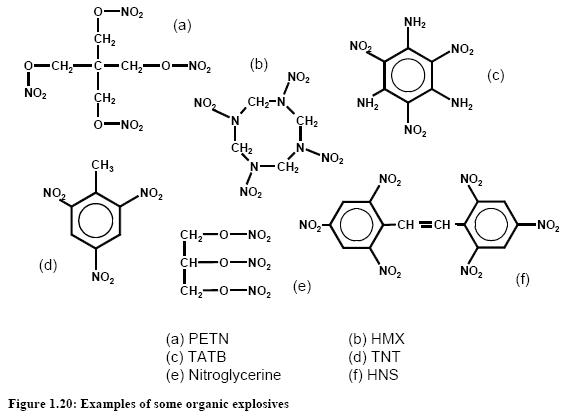Explosives
Back to Information about explosives
Organic chemical explosives are classified as “secondary explosives” [6, Ullmann, 2001] and represent active ingredients extensively used in energetic products such as dynamites and smokeless powders. Figure 1.20 gives some examples. Physical explosives (usually considered only as “blasting agents”) are produced by the mixing of non-explosive materials (or materials not intended to be explosive) e.g. diesel oil, ammonium nitrate, and sodium perchlorate. Explosives are dangerous goods (class 1 ADR) and consequently, due to safety concerns Member States have established special regulations covering their transport, storage and manufacturing. Nearly every change in manufacturing processes and operations requires authorisation by national security authorities.
Secondary explosives are used for industrial and military purposes. Production is carried out by private companies in many countries, e.g. UK, Germany, Norway, Sweden, Switzerland, Portugal. In Spain, production was shared between a national company and private ones until 2004. Nowadays, all Spanish companies are privately operated and owned. In France, military secondary explosives are manufactured by a national company. Production figures and prices are usually not available, but as an example, the yearly production of civil explosives (both inorganic and organic, including mixtures or blasting agents) in Spain and Portugal amounts to about 95000 tonnes. Only about 9000 tonnes of these are organic explosives produced by chemical methods.
Literature: BAT for the Manufacture of Organic Fine Chemicals, August 2006
Back to Information about explosives
